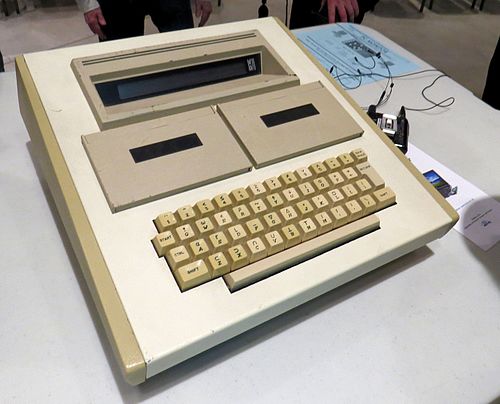eeguru
Veteran Member
I have a few examples of machines that included the Address/Data LEDs on the front panel that indicated the status of the CPU bus. Most infamously the Altair 8800 included one out of necessity. It was initially the only display device in the system. They led to 'Kill the Bit' and other novel uses. But mostly later non-practical versions were an ode to the large computer displays depicted in movies like War Games. Big-Iron had to have Big-Incandescent indicators.
But oddly, they were sometimes 'a thing' in the 80s. I supposed it made computers look more expensive than they actually were if they have lots of 'blink'n lights'. I have a PCjr add-on upper-deck module that has address and data lines for the ISA bus. No amount of clarity a good engineer posses will cause him or her to 'see the code' Matrix-style in the noise..... or so I thought!
I've been working on a FPGA project I plan on announcing at VCF-MW. The FPGA is sitting on the ISA bus and is a bit pin constrained. I didn't have enough extra pins to add taps for a logic analyzer and the two on-board LEDs were getting a bit limiting. So I added a neopixel strip to add another 88 RGB LEDs to my debug display! The obvious first choice was to add the address LEDs (lower 10 in blue/green) and the ISA data lines (red).
What I didn't count on was how mesmerizing the 'dancing LEDs' were when playing wave-table music through a GUS. Here is a short video of the Descent menu music playing while filming my bus monitor!
https://youtu.be/39o-VkpNY4o
But oddly, they were sometimes 'a thing' in the 80s. I supposed it made computers look more expensive than they actually were if they have lots of 'blink'n lights'. I have a PCjr add-on upper-deck module that has address and data lines for the ISA bus. No amount of clarity a good engineer posses will cause him or her to 'see the code' Matrix-style in the noise..... or so I thought!
I've been working on a FPGA project I plan on announcing at VCF-MW. The FPGA is sitting on the ISA bus and is a bit pin constrained. I didn't have enough extra pins to add taps for a logic analyzer and the two on-board LEDs were getting a bit limiting. So I added a neopixel strip to add another 88 RGB LEDs to my debug display! The obvious first choice was to add the address LEDs (lower 10 in blue/green) and the ISA data lines (red).
What I didn't count on was how mesmerizing the 'dancing LEDs' were when playing wave-table music through a GUS. Here is a short video of the Descent menu music playing while filming my bus monitor!
https://youtu.be/39o-VkpNY4o




